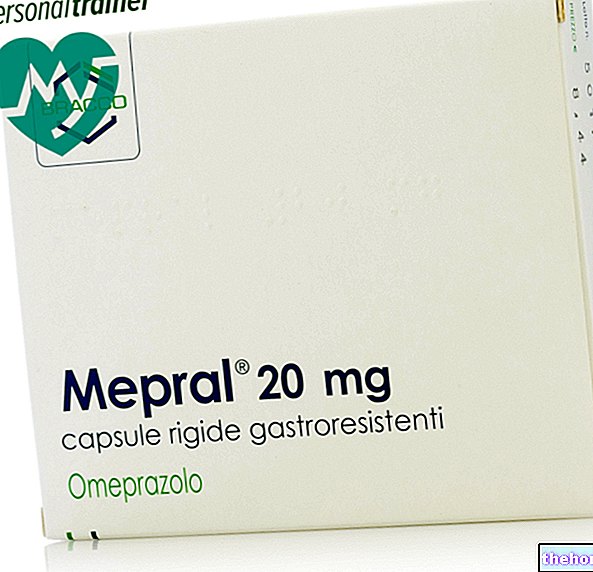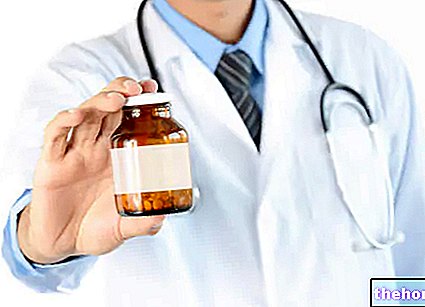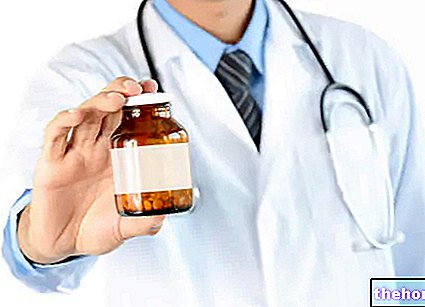Active ingredients: Perindopril (perindopril arginine)
Coversyl 2.5 mg film-coated tablets
Coversyl package inserts are available for pack sizes:- Coversyl 2.5 mg film-coated tablets
- Coversyl 5 mg film-coated tablets
- Coversyl 10 mg film-coated tablets
Why is Coversyl used? What is it for?
Coversyl is an angiotensin converting enzyme (ACE) inhibitor. ACE inhibitors work by dilating blood vessels, making it easier for the heart to pump blood through them.
Coversyl is used:
- to treat high blood pressure (hypertension),
- to treat heart failure (a condition in which the heart is unable to pump enough blood to meet the body's needs),
- to reduce the risk of cardiac events, such as heart attack, in patients with stable coronary artery disease (a condition that involves a reduction or blockage of the blood supply to the heart) and who have already had a heart attack and / or surgery to improve blood supply of blood to the heart by widening the vessels that supply it.
Contraindications When Coversyl should not be used
Do not take Coversyl
- if you are allergic to perindopril or any of the other ingredients of this medicine (listed in section 6), or to any other ACE inhibitors,
- if you have experienced symptoms such as breathlessness, swelling of the face, tongue or throat, intense itching or severe skin rashes related to previous ACE inhibitor treatment or if you or a family member have experienced these symptoms in any other circumstance (a condition called angioedema).
- if you are more than three months pregnant (it is better to avoid Coversyl even in early pregnancy - see "Pregnancy" section),
- if you have diabetes or impaired kidney function and you are being treated with a blood pressure lowering medicine containing aliskiren.
Precautions for use What you need to know before taking Coversyl
Talk to your doctor, pharmacist or nurse before taking Coversyl if any of the following apply to you:
- have aortic stenosis (narrowing of the main artery originating from the heart) or hypertrophic cardiomyopathy (heart muscle disease) or renal artery stenosis (narrowing of the artery that supplies blood to the kidneys),
- suffer from other heart problems,
- have liver problems,
- have kidney problems or are on dialysis
- have a collagen vascular disease (connective tissue disease) such as systemic lupus erythematosus or scleroderma,
- have diabetes,
- follows a diet that restricts the use of salt or uses salt substitutes containing potassium,
- must undergo anesthesia and / or surgery,
- you have to undergo LDL apheresis (the purification of the blood from cholesterol by means of a machine),
- must undergo desensitization treatment to reduce the effects of an "allergy to bee or wasp stings,"
- have recently had diarrhea, vomiting, or are dehydrated,
- she was diagnosed by her doctor as having "intolerance to certain sugars,
- if you are taking any of the following medicines used to treat high blood pressure: - an "angiotensin II receptor antagonist" (AIIRA) (also known as sartans - for example valsartan, telmisartan, irbesartan), particularly if you have kidney problems related to diabetes - aliskiren. Your doctor may check your kidney function, blood pressure, and the amount of electrolytes (eg potassium) in your blood at regular intervals. See also information under the heading "Do not take Coversyl ".
- is of black origin as it may have a higher risk of angioedema and this drug may be less effective in lowering blood pressure than non-black patients.
Angioedema
In patients treated with ACE inhibitors, including Coversyl; angioedema (a severe allergic reaction with swelling of the face, lips, tongue or throat with difficulty in swallowing or breathing) has been reported. This can occur at any time during treatment. If you develop such symptoms, you should stop taking Coversyl and consult a doctor immediately. See also section 4.
You should tell your doctor if you think you are pregnant (or if there is a possibility of becoming pregnant). Coversyl is not recommended in early pregnancy, and must not be taken if you are more than three months pregnant, as it may cause serious harm to your baby if used at that stage (see "pregnancy" section).
Children and adolescents
The use of perindopril is not recommended in children and adolescents up to 18 years of age.
Interactions Which drugs or foods can modify the effect of Coversyl
Tell your doctor or pharmacist if you are taking or have recently taken or might take any other medicines. Treatment with Coversyl can be affected by taking other medicines. Your doctor may need to adjust your dose and / or take other precautions. These include:
- other medicines for high blood pressure, including an angiotensin II receptor antagonist (AIIRA) aliskiren (see also information under "Do not take Coversyl" and "Warnings and precautions"), or diuretics (medicines that increase the amount of urine produced by the kidneys),
- potassium-sparing drugs (e.g. triamterene, amiloride), potassium supplements or potassium-containing salt substitutes,
- potassium-sparing drugs used to treat heart failure: eplerenone and spironolactone at doses between 12.5 mg and 50 mg per day,
- lithium for the treatment of mania or depression,
- non-steroidal anti-inflammatory medicines (e.g. ibuprofen) for pain relief or high doses of aspirin,
- medicines for diabetes (such as insulin or metformin),
- baclofen (used to treat muscle stiffness in diseases such as multiple sclerosis),
- medicines for the treatment of mental disorders such as depression, anxiety, schizophrenia, etc. (e.g. tricyclic antidepressants, antipsychotics),
- immunosuppressants (medicines capable of reducing the body's defense mechanisms) used for the treatment of autoimmune diseases or following a surgical transplant (eg cyclosporine, tacrolimus),
- trimethoprim (to treat infections),
- estramustine (used in cancer therapy),
- allopurinol (for the treatment of gout),
- procainamide (to treat irregular heartbeat),
- vasodilators including nitrates (products that dilate blood vessels),
- heparin (medicine used to thin the blood),
- medicines used to treat hypotension, shock or asthma (eg ephedrine, noradrenaline or adrenaline),
- gold salts, especially with intravenous administration (used in the treatment of symptoms of rheumatoid arthritis).
Coversyl with food and drink
It is preferable to take Coversyl before meals.
Warnings It is important to know that:
Pregnancy and breastfeeding
If you are pregnant or breast-feeding, think you may be pregnant or are planning to become pregnant, ask your doctor or pharmacist for advice before taking this medicine.
Pregnancy
You should tell your doctor if you think you are pregnant (or if there is a possibility of becoming pregnant). Your doctor will usually advise you to stop taking Coversyl before becoming pregnant or as soon as you know you are pregnant and will advise you to take another medicine instead of Coversyl. pregnancy, and must not be taken if you are more than three months pregnant, as it may cause serious harm to your baby if taken after the third month of pregnancy.
Feeding time
Tell your doctor if you are breastfeeding or about to start breastfeeding. Coversyl is not recommended for women who are breastfeeding and your doctor may choose another treatment if you wish to breastfeed. , especially if your baby is newborn or was born prematurely.
Driving and using machines
Coversyl does not usually affect alertness but reactions such as dizziness or tiredness related to the reduction in blood pressure may occur in some patients. If you get these symptoms, your ability to drive or use machines may be reduced.
Coversyl contains lactose
If you have been told by your doctor that you have an intolerance to some sugars, consult your doctor before taking this medicine.
Dosage and method of use How to use Coversyl: Dosage
Always take this medicine exactly as your doctor or pharmacist has told you. If in doubt, consult your doctor or pharmacist.
Take the tablet by swallowing it with a glass of water, preferably at the same time each day in the morning, before a meal. Your doctor will decide on the right dose for you. The recommended dose is as follows:
Hypertension: the usual starting and maintenance dose is 5 mg once daily. After one month, this dose can be increased to 10 mg once daily if required. 10 mg per day is the maximum recommended dose for the treatment of high blood pressure. If you are over 65, the usual starting dose is 2.5 mg once a day. After one month this dose can be increased to 5 mg once a day and if needed to 10 mg once a day.
Heart failure: the usual starting dose is 2.5 mg once a day. After two weeks, this dose can be increased to 5 mg once daily, which is the maximum recommended dose for heart failure.
Stable coronary artery disease: the usual starting dose is 5 mg once daily. After two weeks, this dose can be increased to 10 mg once daily, which is the maximum recommended dose for this indication. If you are over 65, the usual starting dose is 2.5 mg once a day. After one week this dose can be increased to 5 mg once daily and after another week to 10 mg once daily.
Use in children and adolescents
Not recommended for use in children and adolescents
Overdose What to do if you have taken too much Coversyl
If you take more Coversyl than you should
If you have taken too many tablets, go to the nearest emergency department or consult your doctor immediately. The most likely effect of an overdose is a drop in blood pressure which can cause dizziness or fainting. In this case, lying down with your legs elevated may help.
If you forget to take Coversyl
It is important to take the medicine every day as regular treatment is more effective. However, if you forget to take a dose of Coversyl take the next dose as usual. Do not take a double dose to make up for a forgotten dose.
If you stop taking Coversyl
As treatment with Coversyl is usually for life, you will need to speak to your doctor before you stop taking this medicine.
If you have any further questions on the use of this medicine, ask your doctor or pharmacist or nurse.
Side Effects What are the side effects of Coversyl
Like all medicines, this medicine can cause side effects, although not everybody gets them.
Stop taking the medicine and tell your doctor straight away if you experience any of the following side effects which can be serious:
- swelling of the face, lips, mouth, tongue or throat, difficulty in breathing (angioedema) (See section 2 "Warnings and precautions") (Uncommon - may affect up to 1 in 100 patients),
- severe dizziness or fainting due to low blood pressure (Common - may affect up to 1 in 10 people),
- unusually fast or irregular heartbeat, chest pain (angina) or heart attack (Very rare - may affect up to 1 in 10,000 patients),
- weakness in the arms or legs or trouble speaking which could be a sign of a possible stroke (Very rare - may affect up to 1 in 10,000 people),
- sudden wheezing, chest pain, shortness of breath or difficulty in breathing (bronchospasm) (Uncommon - may affect up to 1 in 100 people),
- inflamed pancreas which can cause severe abdominal pain and back pain accompanied by feeling very unwell (Very rare - may affect up to 1 in 10,000 people),
- yellowing of the skin or eyes (jaundice) which could be a sign of hepatitis (Very rare - may affect up to 1 in 10,000 people),
- rash often starting with red itchy patches on the face, arms or legs (erythema multiforme) (Very rare - may affect up to 1 in 10,000 people).
Tell your doctor if you notice any of the following side effects:
Common (may affect up to 1 in 10 patients):
- headache,
- dizziness,
- vertigo,
- tingling,
- vision disturbances,
- tinnitus (sensation of noise in the ears),
- cough,
- shortness of breath (dyspnoea),
- gastro-intestinal disturbances (nausea, vomiting, abdominal pain, taste disturbances, dyspepsia or difficulty in digestion, diarrhea, constipation),
- allergic reactions (such as rash, itching),
- muscle cramps,
- feeling tired.
Uncommon (may affect up to 1 in 100 patients):
- mood changes,
- sleep disorders,
- dry mouth,
- intense itching or severe skin rashes,
- formation of clusters of blisters on the skin,
- kidney problems,
- impotence,
- sweating,
- excess eosinophils (a type of white blood cell),
- drowsiness,
- fainting,
- palpitations,
- tachycardia,
- vasculitis (inflammation of the blood vessels),
- photosensitization reactions (increased sensitivity of the skin to the sun),
- arthralgia (joint pain),
- myalgia (muscle pain),
- chest pain,
- malaise,
- peripheral edema,
- fever,
- risk of falls,
- alteration of laboratory parameters: high level of potassium in the blood reversible with
- Discontinuation of treatment, low sodium level, hypoglycemia (very low blood sugar levels) in diabetic patients, increased plasma urea and increased plasma creatinine.
Rare (may affect up to 1 in 1,000 patients):
- changes in laboratory parameters: increased level of liver enzymes, high level of serum bilirubin.
Very rare (may affect up to 1 in 10,000 patients):
- confusion,
- eosinophilic pneumonia (rare type of pneumonia),
- rhinitis (congested or runny nose),
- acute renal failure,
- change in blood values such as a decrease in the number of white blood cells e
- of red blood cells, a lowering of hemoglobin, a lowering of the number of platelets.
Reporting of side effects
If you get any side effects, talk to your doctor or pharmacist or nurse. This includes any possible side effects not listed in this leaflet. You can also report side effects directly via the national reporting system at https: // www. aifa.gov.it/content/segnalazioni-reazioni-avverse. By reporting side effects you can help provide more information on the safety of this medicine.
Expiry and Retention
Keep this medicine out of the sight and reach of children.
Do not use this medicine after the expiry date which is stated on the carton and bottle. The expiry date refers to the last day of the month. Keep the container tightly closed to protect the product from moisture.
Do not throw any medicines via wastewater or household waste. Ask your pharmacist how to throw away medicines you no longer use. This will help protect the environment.
Composition and pharmaceutical form
What Coversyl 2.5 mg contains
- The active ingredient is perindopril arginine. One film-coated tablet contains 1.6975 mg of perindopril (corresponding to 2.5 mg of perindopril arginine).
- The other ingredients in the tablet core are: lactose monohydrate, magnesium stearate, maltodextrin, hydrophobic colloidal silica, sodium starch glycolate (type A), and in the film coating: glycerol, hypromellose, macrogol 6000, magnesium stearate, titanium dioxide.
What Coversyl 2.5 mg looks like and contents of the pack
Coversyl 2.5 mg tablets are white, round, convex film-coated tablets.
The tablets are available in boxes of 5, 10, 14, 20, 30, 50, 60 (60 or 2 containers of 30), 90 (90 or 3 containers of 30) 100 (100 or 2 containers of 50), 120 ( 120 or 4 containers of 30) or 500 tablets (500 or 10 containers of 50).
Not all pack sizes may be marketed.
Source Package Leaflet: AIFA (Italian Medicines Agency). Content published in January 2016. The information present may not be up-to-date.
To have access to the most up-to-date version, it is advisable to access the AIFA (Italian Medicines Agency) website. Disclaimer and useful information.




























